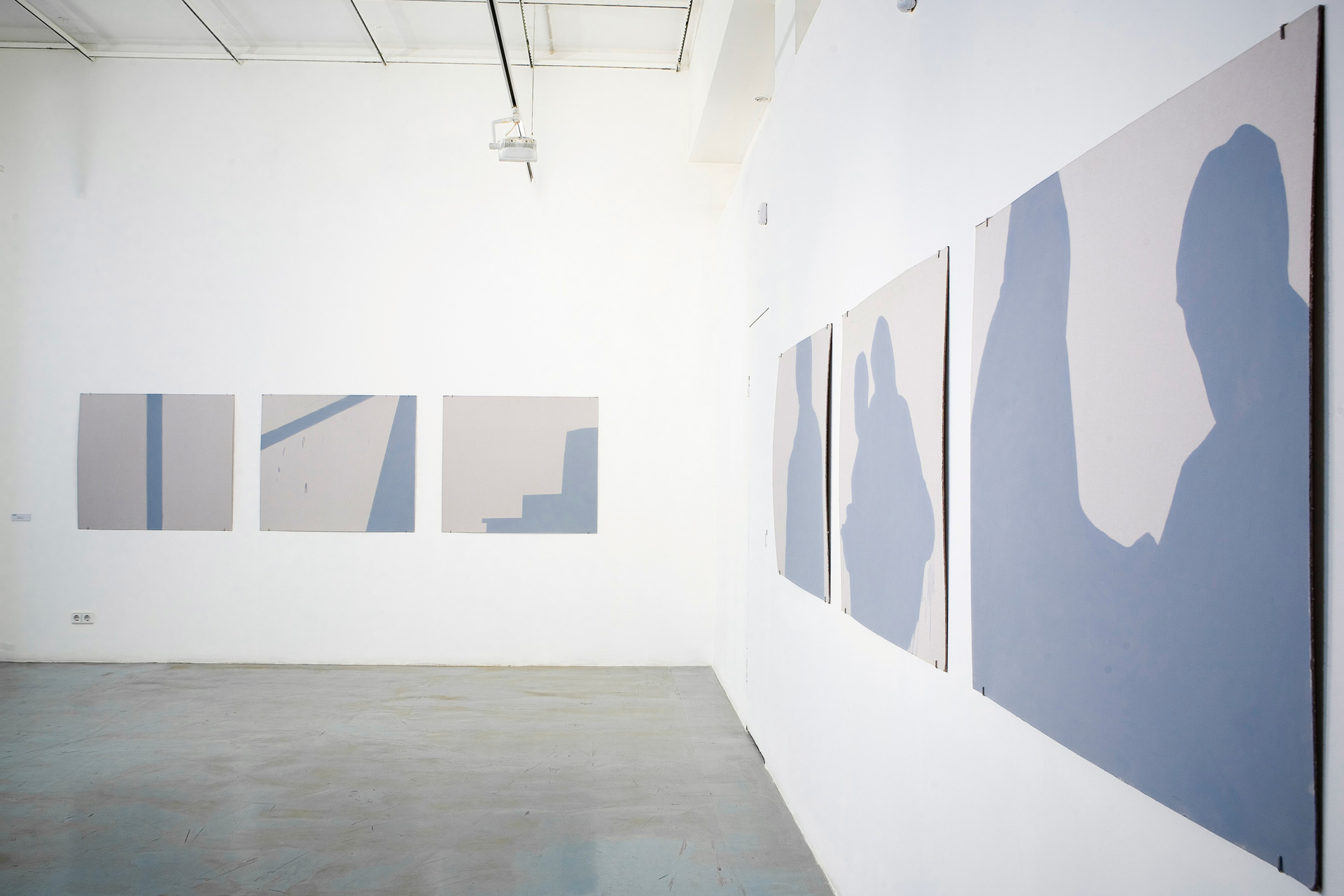
Vladimir Logutov’s exhibition in the space of Stella Art Foundation at Mytnaya ullitsa encompasses the artist’s works from five different series: The Shadows, The Crosswords, The Spoilage, The Leftovers and The Negative Drawing. All of them are united by a paradoxical idea of deficiency, absence, gap or inversion of what is considered the objective of an artistic statement, what gives a work of art its meaning and its function, represents its aesthetic centre, the artistic image.
Logutov takes it all “off screen”, thereby bringing in an intrigue of a game. His Shadows series, as its very title clearly suggests, shows only the faithfully depicted shadow silhouettes of objects instead of the objects themselves. Squares of The Crosswords are filled up with crosses instead of letters and words, which replaces the object of devoted passion of commuters and bored office staff with games like “sea battle” or “noughts and crosses”. The Spoilage is a series of pictures with faithfully reproduced loss of coating, through which one can see the material of the canvas as a convincing proof of the fact that the image didn’t even manage to appear there, while The Leftovers demonstrate an impressive mass of pencil stubs, which, by the very fact of their presence, prove that the visual image had existed somewhere at some point in time, but the artist is not going to present it to the public.
It is, however, Logutov’s Negative Drawing which looks like a culmination of the artist’s efforts to evade his traditional professional duties. It is a series of “abstract expressionist drawings”, every one of which is supplied with individual title, suggesting, one would think, some realistic representation. And yet, there is not a trace of any modernistic deception. The artist has indeed drawn human figures, but not in a very usual way. His hand was placed between two sketch-boards put one against the other (with sheets of paper fixed on each board) and the drawing process was performed as follows. The front end of the graphite rod was drawing an image on the first sheet, but when it was lifted from the sheet, its back end was putting tangled lines on the opposite sheet. Thus, the artist recorded the whole cycle of the mutually complementary movements of his hand, the merely “technical” ones and the ones creating an image. But then it was this side effect of the process, its technically abstract element, that was chosen as the actual exhibit, while the “immediate” image was withdrawn from the audience’s view.
Far from being any self-contained conceptual or formal acrobatics, Logutov’s consistent flight from the visual image has everything to do with the essence of the artistic creative process and the proverbial “tricks of the trade”. Any lover of art would know that the sheer copying of a particular fragment of the reality is never an end in itself for an artist. Some sort of mysterious “additional element” is required for the isual image to appear and, correspondingly, for the viewer to experience an emotional reaction. On the one hand, the impossibility of seeing it with one’s own eyes causes, every now and again, a suspicion of some sort of trickery on the part of the so-called “general public” (which is as unavoidable, as it is wrong). On the other hand, the artists are not completely free from a tendency to mystify their own activity. Pandering to this tendency became much easier in the era of modernism and contemporary art, when the former social convention about the meaning of the visual artistic creation based on its similarity with the reality was completely destroyed, and the “star magnitude” of the particular artist eventually emerged as the key criterion of aesthetic quality of their work.
Still, some efforts to at least designate and name, let alone describe and define, the above-mentioned “additional element”, have been made throughout the observable history of art. Apart from the authors of theoretical treatises, this issue was addressed by artists themselves, every one of them dealing with it in his or her own way. Valentin Serov once observed in passing that he necessarily “needs to make a mistake” to create a good portrait. Kazimir Malevich was finding an entirely formal “additional element” in every new art movement of the time close to his own, while Marcel Duchamp, the leading intellectual non-conformist of the 20th century, wrote of the “art coefficient” establishing the difference between the original intention of the author and the product of its mplementation and characterizing the eventual aesthetic value of a work of art.
Logutov, relating himself to this “tradition of definitions”, exposes in a provocative manner the chief myth of the art. It would seem that in the process he bluntly states that the king is shamelessly naked — but for one circumstance. For him, the word “additional” clearly carries two different meanings. Logutov’s “element” may be both a nice and optional aesthetic bonus to the craftman’s work of producing art objects, and that very element that creates the required completeness, makes any physically specific object into a work of art. As a result, it all works like in the well-know children’s rhyme: “if somebody isn’t somewhere, then somebody somewhere is”. The intrigue is in the search for the solution: in looking for this additional element in his exhibition.
Vladimir Levashov